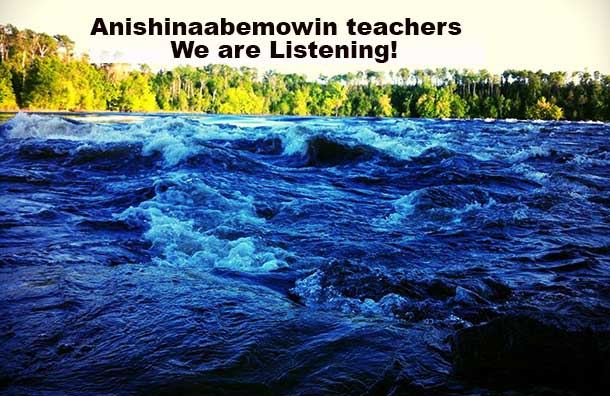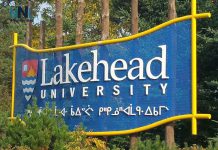
Educator and spoken-word poet Taylor Mali often uses the term “Miracle Workers” to describe teachers. Speaking to this term, I couldn’t agree more. Teachers are miracle workers who support us and assist us at unbelievably great lengths to help us reach for (and connect to) our futures and realize our dreams.
However, among the tiny “Thank You” cards that adorn filing cabinets, small bronze and oak award plaques that hang on office walls in various departments, and shiny apples brought inside lunch boxes soon to be found on many teachers’ desks (as a symbolic and sincere nudge of appreciation), I can’t help but feel that there is a particular kind of educator whose passion, work, time, and significance goes a bit unnoticed or a bit unappreciated at times.
In the past; even by myself.
Perhaps it is because what they teach is commonly regarded as an “add-on”, “recreational” or “beyond necessary.” Perhaps it is because we live in times where learning is often immediately measured by its economic value only. Perhaps it is because it is often difficult for many to fully credit learning that defines itself outside a classic trifecta of reading, writing, and arithmetic. But most likely (and this is where my vote is placed), many still have yet to realize the beauty, the depth, the significance, the elegance, and the complexity of the language. Our Language. Ojibwe Language. Anishinaabemowin.
Our Anishinaabemowin teachers and instructors are a very special breed of educator.
To our Anishinaabemowin teachers, this sincere acknowledgement and tip-of-the-toque is to you today. Miigwech. Thank You.
So what do these heroes, these Ogichidaag (warriors), do each day?
They stand firm each day to continue to hold back a tsunami-wall of incoming tide that began with policies and practices as far back as the Residential Schools. This flooding surge was to ensure we would forget who we are. One of the many ways this was to be accomplished was through the disruption and erasure of our language. Anishinaabemowin teachers not only stand firm to stop the mile-high wave of dwindling-memory momentum, but flex their gifts to walk forward to push the swollen tide back much like turning back the hands of time; reversing the flow.
They not only teach us vocabulary and terms such as Bear (Makwa), Sister (Nimise), Tree (Mitig), and My Relatives (Nindinawemaaganag) on flash-cards and in glossaries, but they help us understand that the language and culture (which are fused and interdependent) are very much about heart. “Ode” or “De” (pronounced Oh-Day and Day), meaning “heart” or the physical center, can be found within many words (and linked to their deeper meanings) such as; Doodem (Clan), our identity that reach down lines of lineage and, very literally, the spiritual heart of self; Dewe’igan (Drum), that which makes the sound of a heart; Ode’imin (Strawberry), Heart-Berry whose roots help with medicines related to cardiovascular health; Oodena (Town), the Heart of a Village; Debwewin (Truth), the sound that comes from one’s heart; and Midewewin(our very special, traditional lodges), the way of the heart. Anishinaabemowin is very much about heart…and our teachers keep that shared-heart beating resilient and strong. Such resilient and shared heartbeats have been clearly heard the world over within indigenous language revitalization efforts and their connection to community health and community well being.
They not only help us to acknowledge a natural calendar rooted in the cycles of Aki (Earth) and demonstrated by the thirteen moons (that pre-date the twelve month Gregorian calendar many of us hang on refrigerators at home), but they teach us what each moon signifies. They are not only beautiful in terminology, but all reflect the very real changes taking place in our environment during each moon cycle. Waatebagaa-Giizis (“the leaves-changing-color moon” in the Fall), Gashkadinowi Giizis (the moon where the water will freeze over) and each of the eleven others tell us when to harvest wild rice, when baby bears are born, and when the strawberries will return. By sharing these teachings, Anishinaabemowin teachers remind us that there is a natural cycle to the world around us that is bigger than us, to appreciate it and acknowledge it with wonder, and that we are (humbly) a small piece in a very complex world.
They not only help us to learn the different sounds that vowels (and double-vowels) make when compared the English language system, but they help us better understand the underlying philosophies that rest at the core of the language – philosophies that define the teachings of our culture. For instance, lessons such as “respect elders”, “respect the earth”, “respect women”, and “respect children” never have to be articulated as they are given in the language. Gichi Ayaa’aa (“elder”) literally means ‘great being.’ Akiwenzi (“old man”) means a ‘caretaker of earth.’ Mindimooyenh (“old woman”) breaks down to “one that holds it all together” and the word Abinoojii (“child”) acknowledges a spirit that has been placed here. The language firmly holds our values.
They not only keep us learners passionately interested by fusing traditional teachings and perspectives of life with the technology such as Smartboards that hold our attention, but they keep our focus held long after we depart from the classroom by sharing that Anishinaabemowin contains a very unique way of seeing the world. Compared to the English language (which holds nouns in a majority of its words), Anishinaabemowin reveals verbs in a significant majority of its words; a reminder of the actions and movements that all life takes, all around us, in the world which we are situated.
They not only prove (time and time again) that any person can begin to dip their toes into the shimmering oasis of Anishinaabemowin and become a successful learner beginning with the basics, but they also continue to remind us of the elegant complexity and mile-deep intricacy of our language. The over six thousand different verb forms (acknowledged by the Guinness Book of World Records which placed the Ojibwe language among the most complex languages in the world), animate (living) and inanimate (non-living)designations, intransitives and transitives, and multidimensional perspectives such as inclusionary or exclusionary types of “we” are only a few examples of the elaborate nature of our language.
They not only welcome new learners and many others continuing to connect into their classroom with a warm “Boozhoo!” (Hello), but they take the students on a journey through the heart of the language where the culture is kept alive. For instance, they acknowledge that although a common misunderstanding states that “Boozhoo” is a corruption of the French word “Bonjour”, there is always room for patience, learning, and correction when they share that “Boozhoo” has its roots long before contact as an acknowledgement of a central spirit in our stories reaching back generations; namely Nanaboozhoo.
They not only teach us weather terms for when we open our eyes to the day that awaits us, but they share with us the unique way of seeing the world though the lens of our cultural affinity and spirituality. For example, Animikiikaa (uh-nimm-uh-kee-kaah) is a term that acknowledges that it is thundering outside. On a deeper level, this term breaks down to express that there is an abundance of thunderbirds are about. It is said that the thunderbirds bring the storms.
They not only teach us that every bit of life on the lands we share is sacred, but all life is relational to each other. One example of how this is embedded in the language is that connection between the Clam (Es, pronounced like the word ‘Ace’), as well as the Raccoon (Esiban, pronounced Ace-ih-Bun) and the relationship between them as one nourishes the other.
They not only remind us about how each sound we make in our language is sacred and are to be honored, but the language of the animals we share lands with (and even actions taking place on the lands) is revered by means of the language. For instance, the language spoken by the owl is honored in our word for him (Goo-koo-ko’oo) just as our words for the Raven (Gaa-gaa-gi) and the Chickadee (Gijigijiganeshii) honor their vocalizations. Also, respecting the language of actions taking place on the land can be seen between words such as Ojiim (“kiss”), Jiimaan (“boat”), and Jiime (“to paddle”) as when one is in their boat and moving their paddles, the dipping of the paddles into the water’s surface sounds much like the water is being gently kissed.
They not only teach us particular phrases, but share with us just how deep and multidimensional a phrase can be. For instance, a phrase such as Gi Zhawenimin goes beyond a simple “I love you” into understandings of someone being treasured, being cherished, being respected, and being appreciated; which are endemic within the phrase itself.
They not only remind us of the importance and sacredness of the term “Anishinaabe” (which honors our creation story’s assertion that we all were lowered down to these lands from the stars up above), but they also remind us of the teachings that all creation stories (of all cultures) are to be respected and regarded as true, in-line with the Anishinaabe Seven Grandfather teachings.
And they not only share with us that all languages, tongues, and ways of communicating are special, connected to a People’s internal culture, and all worthy of respect, but they also remind us everyday of the unique and distinctive place of Anishinaabemowin as the indigenous language to these lands (of northern Minnesota, western Ontario, and into Manitoba), as an active and dynamic component to negotiations and discussions that defined Treaty #3, and the distinctive dialects that vary according to location, land, place, space, and the teachings connected to each.
Our Anishinaabemowin teachers and instructors (whether within the classroom, outside the classroom, those with teaching licenses, or elders keeping our indigenous tongue alive within communities) are a special breed of educator.
May we always honor and appreciate these language keepers, these sacred knowledge keepers, these warriors, and to be sure, these teachers.
This is an open “Miigwech” to you all; a word of appreciation for the work you do, a sincere acknowledgement of the massive impact you make, to show respect for the knowledge you’ve shared over the years (which I hope you all see is active and echoed in these words), and to share a few personal thoughts to honor what you do for so many of us.
You all, most certainly, stand shoulder-to-shoulder with all Miracle Workers, all teachers, that Taylor Mali often mentions – always stand tall with the knowledge and firm awareness of how deeply and profoundly you touch our lives.
You remind us that our language is best taught (and understood) from experience and that our language is spiritual.
And we are listening.
Gichi Miigwech.
In Sincerity and Solidarity,
Robert Animikii Horton
“Bebaamoyaash”
Rainy River First Nations
and Just Another Anishinaabe Language Learner, Learning Every Day





